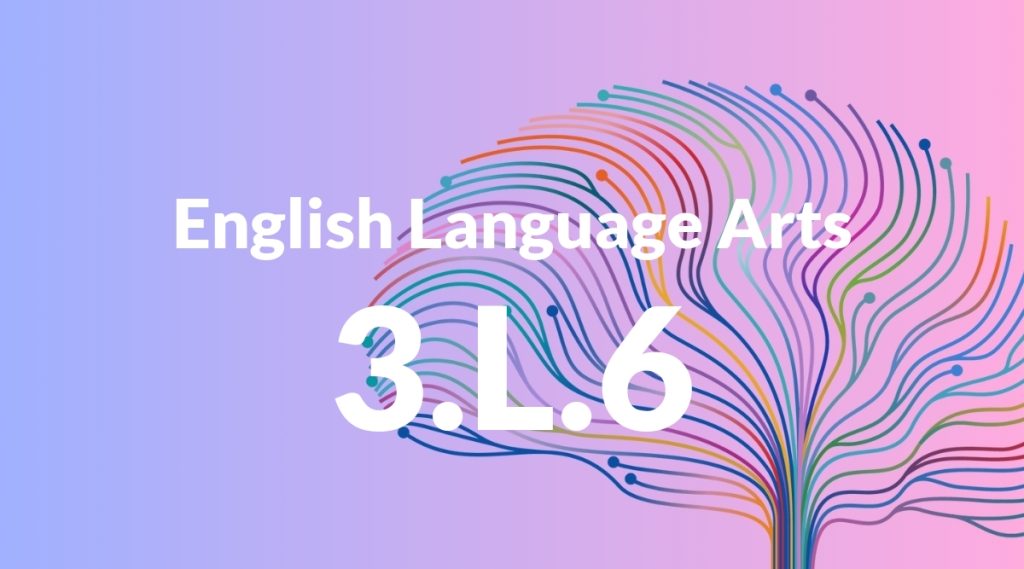Standard: 3.L.6 – Acquire and use accurately grade-appropriate conversational, general academic, and domain-specific words and phrases, including those that signal spatial and temporal relationships (e.g., After dinner that night we went looking for them).
Grade level: Grade 3
Subject: English Language Arts
Domain: Language
Teacher Overview
This standard emphasizes the importance of students acquiring and accurately using vocabulary that is appropriate for their grade level. It includes conversational, academic, and domain-specific words and phrases, with a focus on those indicating spatial and temporal relationships. Mastery of this standard is crucial for students to effectively communicate in both written and spoken forms, laying a foundation for more advanced language skills. Students should have a foundational understanding of basic conversational vocabulary and the ability to identify simple spatial and temporal relationships.
After mastering this standard, students will be able to use a broader and more precise vocabulary, enhancing their ability to describe, narrate, and explain concepts clearly and effectively.
Common Misconception 1
Some students may mistakenly believe that domain-specific vocabulary is only relevant in written contexts. This misconception can limit their ability to use these words in spoken communication, which is equally important.
Intervention 1
To address this, incorporate oral language activities that require students to use domain-specific vocabulary in discussions, presentations, and role-playing scenarios. This helps reinforce the versatility and importance of these words in all forms of communication.
Common Misconception 2
Another common misconception is that spatial and temporal words can be used interchangeably. This confusion can lead to inaccuracies in both written and spoken descriptions.
Intervention 2
Provide clear, differentiated instruction on the use of spatial versus temporal words. Use sorting activities, sentence construction tasks, and visual aids to help students understand and apply these distinctions correctly.
Prerequisite Knowledge
Students should have a basic understanding of common words and phrases used in everyday conversations and be able to identify simple spatial and temporal relationships.
Subsequent Knowledge
Students will develop the ability to use more complex and varied vocabulary in both written and oral communication, enhancing their descriptive and narrative skills.
Instructional Activities
- Vocabulary sorting games focusing on spatial and temporal words.
- Classroom discussions using academic and domain-specific vocabulary.
- Writing prompts that require the use of spatial and temporal phrases.
- Interactive storytelling sessions where students incorporate new vocabulary.




